
Samaipaticereus is a monotypic genus of cactus containing the sole species Samaipaticereus corroanus. It is known only from East Andean Bolivia and Peru.
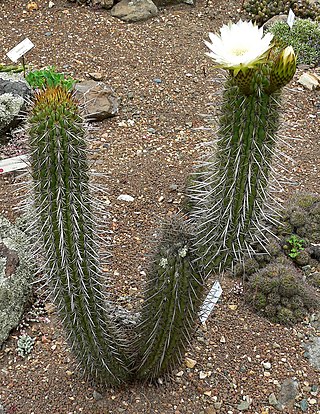
Leucostele chiloensis is a species of cactus native to South America; genus members are known as hedgehog cacti, sea-urchin cactus or Easter lily cactus.

Lophocereus schottii, the senita cactus, is a species of cactus from southern Arizona and north-western Mexico, particularly Baja California and Sonora. Ultramafic soils facilitate the endemism of plant species and are often associated with their distribution.

Oreocereus celsianus, or the old man of the mountain is a member of the family Cactaceae native to the high lands of the Andes in South America, and is named for its fluffy white hair, which may protect it from intense sunlight and extreme temperatures.

Weberbauerocereus weberbaueri is a species of Weberbauerocereus from Peru.

Oreocereus trollii, commonly known as the Old Man of the Andes cactus, is a species of cacti native to Argentina and Bolivia. Though listed as Least Concern by the IUCN, the plant is collected extensively, and in some areas is threatened.

Soehrensia formosa, is a species of Echinopsis found in South America. In north-western Argentina, Bolivia and northern Chile. First published in Cactac.: Handb. Kakteenk. 3: 1678 in 1959.
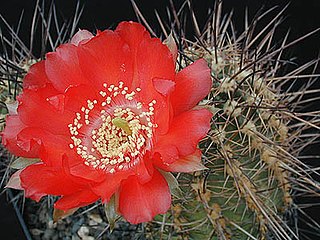
Echinopsis haematantha, is a species of Echinopsis found in Argentina and Bolivia.

Soehrensia huascha, is a species of Soehrensia in the Cactaceae family, found in north western Argentina. First published in Cactaceae Syst. Init. 29: 5 in 2013.
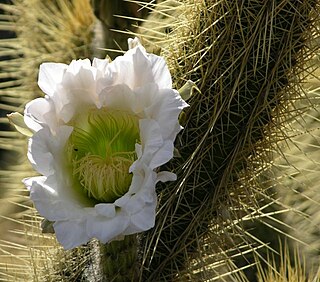
Soehrensia camarguensis, is a species of Soehrensia found in Bolivia.
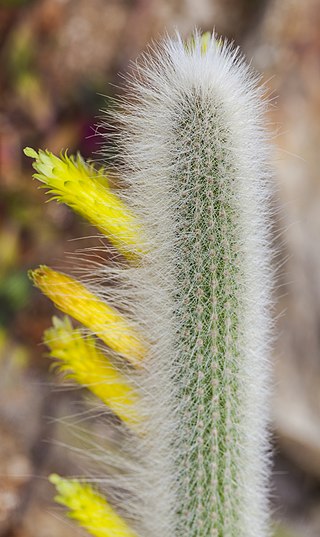
Cleistocactus ritteri is a species of Cleistocactus found in Bolivia.
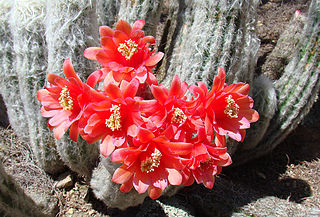
Oreocereus doelzianus is a species of cacti native to Peru.

Cleistocactus buchtienii is a species of columnar cacti in the genus Cleistocactus.
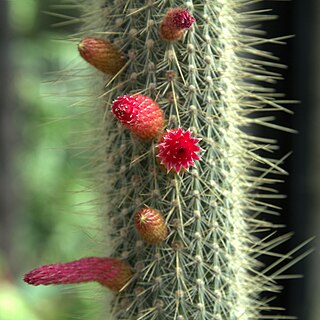
Cleistocactus parviflorus is a species of columnar cacti in the genus Cleistocactus.
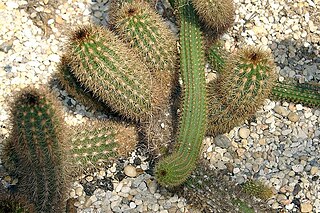
Haageocereus acranthus is a species of Haageocereus found in Peru.
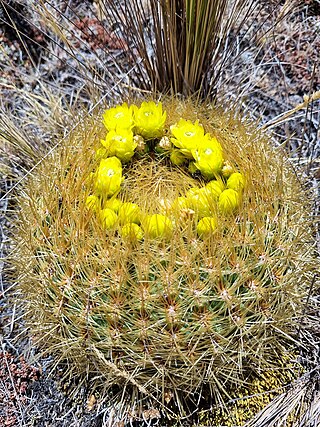
Oroya borchersii is a species of cacti, originating from Peru

Oreocereus ritteri is a species of Oreocereus found in Peru.
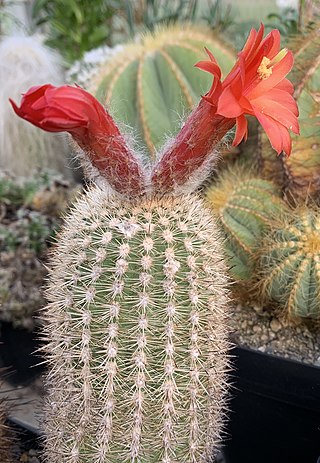
Oreocereus hempelianus is a species of cactus native to Peru and Chile.
Echinopsis marsoneri is a species of cactus from Argentina and Bolivia.

Oreocereus leucotrichus is a species of cactus native to Peru and Chile.
























